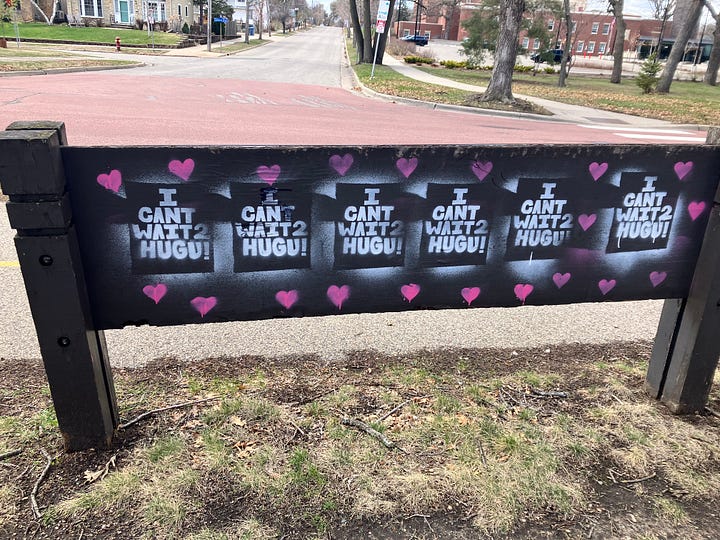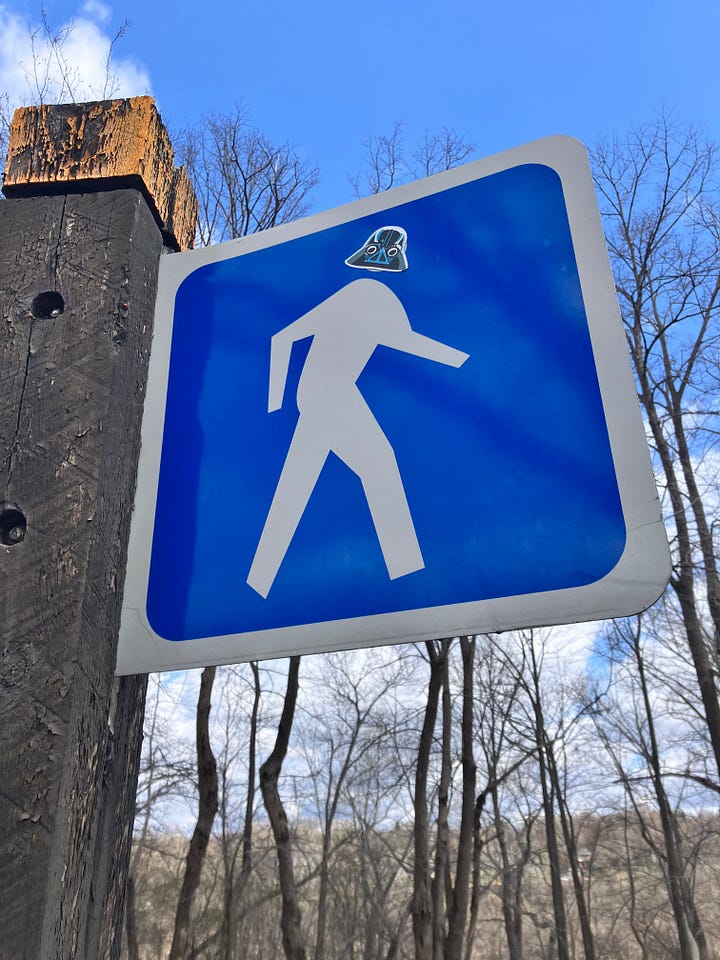Minneapolis may be known as the City of Lakes, but for me, it’s always been the City of the River — the Mighty Mississippi.
My childhood home is in one of the few neighborhoods in Minneapolis not close to a lake. The Mississippi, however, is only a few blocks away. I grew up walking and biking on the asphalt paths at the top of the bluffs, climbing on stone walls built by the WPA in the 1930s.
My dad loved the Mississippi too — he even worked for the the Upper Mississippi River Basin Commission before Reagan’s cuts to the agency.
After my dad died, I spent many hours in the humid June weather walking up and down the Mississippi, walking to Minnehaha Falls or the opposite direction to the Franklin Avenue Bridge, where the path dips down from the bluffs and meets the river.
Often, I’d talk with friends on the phone. I always picked the chatty ones — everyone has that friend who can basically steer a conversation themselves without much input from you. If you don’t have a friend like that, then odds are that YOU are that friend. It was comforting to have these walks layered with human connection that didn’t take much effort on my end.
Instead of a gravestone, we decided to dedicate a bench to my dad, in a little alcove overlooking the Mississippi. He would’ve loved the spot. I know other people love it — we heard about a couple getting engaged there and you’ll often find folks sitting and enjoying the view.
I was in Minneapolis this past weekend, so I did what I always do and walked down to visit his bench. It’s still wintery in Minnesota, which was a shock coming from California’s spring time.
The trees were bare and everything looked grey and brown and dull. As I headed through the neighborhood and towards the river, I noticed bright blue streaks on the ground - as if someone had been spray-painting yards. It turns out these were the first signs of spring - Siberian Squill, according to my plant identification app.
I hit River Road and began walking down the path, eventually taking stone steps down to a lower path. On this stretch of the river, there’s the main cycling and walking paths next to the road, but there are also numerous formal and informal paths that go down the bluffs, some all the way down to the river. As a kid, I don’t remember ever straying from the main path - the other paths down through the woods seemed dangerous and scary and my parents forbade us to enter them. And so despite spending the first seventeen years of my life next to this river, I’ve explored very little of it.


Each time I come back to visit is an opportunity to change that. So I took the lower path, eventually climbing back up to my dad’s bench to sit and enjoy the view of the river and across to St. Paul.
I took a different path home, through an oak savanna currently being restored by the parks department. These oak savannas used to be common in this part of the midwest — you’ll also find them in slightly different forms in California and also in the UK, as I learned during my walks there.
In the midwest, they’re a mixture of clumps of oak trees and prairie grass and wildflowers, which were maintained and cultivated by the Anishinaabe people through controlled burns and periodic grazing. As tribes were stripped of access to their lands, they could no longer use their scientific knowledge to maintain these landscapes, and these areas soon reverted to forests, many filled with non-native trees.
This is a problem, especially as climate change accelerates. While we may think of forests as the ultimate “green” habitat, thick forests actually have less biodiversity and can be less of a carbon sink than savannas/grasslands/prairies. As droughts and wildfires worsen, it’s becoming clear that prairies and grasslands are better able to weather droughts, due to their deep root systems, and release less carbon than forests when they do catch on fire.
Increasingly, governments are using indigenous land stewardship practices that were almost wiped out due to the genocide and displacement of native peoples. The oak savanna I stood in high above the Mississippi was an example of that. The parks department had removed trees and conducts regular controlled burns to restore and regenerate the prairie. While everything was brown and dull while I was there, I’m sure it is a stunning landscape in the spring.
The sky was darkening quickly, so I headed back to enjoy a thunderstorm from my sister’s porch.
The next day, I took a different way to the river, down a set of steps I’d never been on. They were steep and led down to a messy patch of woodland littered with leaves and strewn with streams. I stood right on the shore of the river, which seemed oddly low. Many messy sandbars were visible, a reminder of how tricky it can be to navigate this river, despite massive engineering projects over the decades. It’s no longer the river of Mark Twain, but it can still be wild.
On my way back up to the path, I passed a mysterious collection of tires. Where did they come from? How did they get there? Few answers were available, but the sign told me they’ll eventually be picked up by a barge.
A lot has changed in the neighborhood I grew up in. The little commercial intersection near my mom’s house used to consist of a pool hall, a ratty corner store, and an auto mechanic shop. Now, that corner boasts a fancy bakery/cafe, a “wellness studio”, and a children’s creative play center/garden. The only holdout is the apartment building on the 4th corner, though I shudder to think what the rent costs now. But as much as the neighborhood might gentrify and change, the river stays constant. Constant but not the same. It rises and falls and freezes and thaws, the bluffs turning green and then yellow and orange and red and then brown and then white with snow. It’s a shifting but steady presence; the Mighty Mississippi always rolls on.













Love this! have you read my friend Manjula's book The Last Fire Season yet? Your discussion of good fire and indigenous land stewardship practices makes me think of it. I think you will love it.